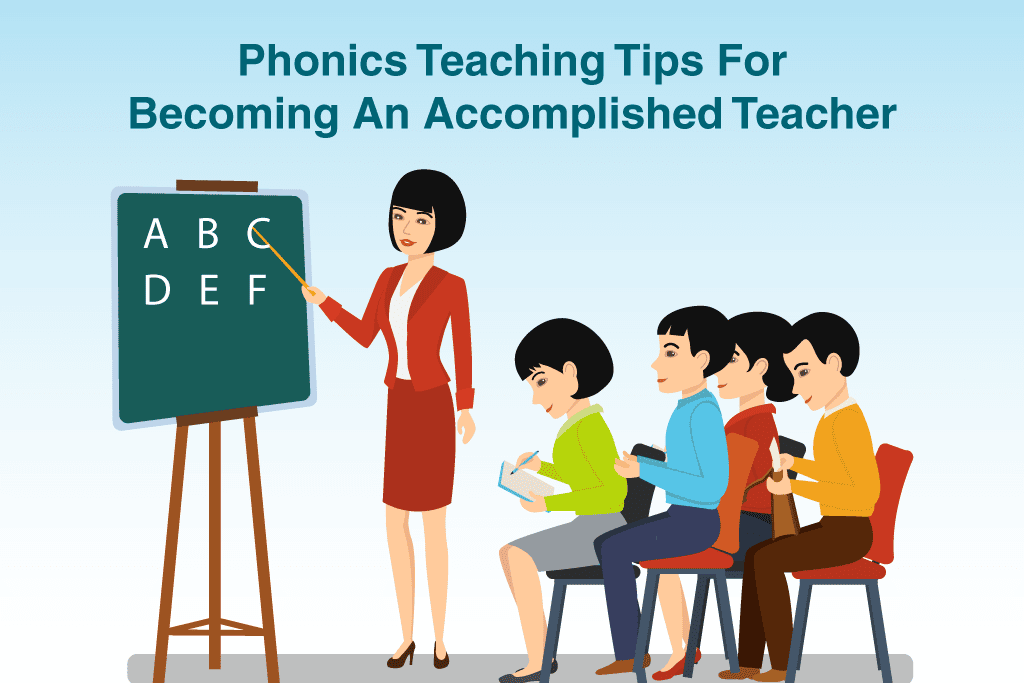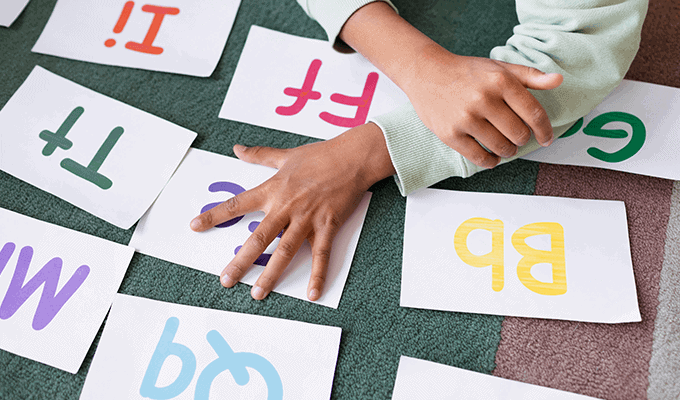Phonics Teaching Tips For Becoming An Accomplished Teacher
Phonics is a fundamental aspect of early education. It plays a crucial role in developing children’s reading and language skills. Phonics teaching involves teaching the learner the relationship between letters and sounds. Learning this relationship helps children decode words and improve their overall literacy.
Phonics teaching holds immense importance in early education. It forms the foundation for reading and writing skills. When children grasp phonics principles, they become capable of decoding words and recognizing spelling patterns.
Research has shown that strong phonics skills correlate with better overall academic achievement. They become confident readers and proficient communicators.
In this blog, we will discuss valuable tips for aspiring teachers who want to become accomplished phonics educators. These tips can enhance your ability to teach phonics effectively.
Transform Your Teaching with Expert Phonics Tips
Explore 6 Expert Phonics Teaching Tips
Listed below are 6 expert tips that can help you become a better phonics teacher, making you better equipped to join and conduct phonics classes for kids:
1. Mastering the Fundamentals of Phonics
First of all, it is essential to master the fundamentals of phonics and understand its role in developing reading and language skills. Mastering the fundamentals will allow you to become an expert phonics teacher.
Phonics method of teaching involves teaching the connection between letters and their sounds. Usually, educators teach young learners phonics by providing them with explicit instruction on letter-sound relationships.
Students learn to decode words which enhances their overall literacy skills. Having your basics clear will allow you to become an accomplished phonics teacher. Apart from helping students improve their reading abilities, you will also be able to help them for long-term success in academics and beyond.
If you are interested in mastering the fundamentals skills, refer to our guide: What is Jolly Phonics and Five Core Jolly Phonics Skills? It will help you better understand the core skills, making you better equipped to teach Phonics.
2. Incorporate Different Voices When Teaching Phonics
Using different voices in a phonics teaching method can be highly beneficial for students. It will help you capture their wandering attention. It makes the phonics learning process engaging. This way, students can reinforce phonemic awareness.
Tutors can use distinct voices for this purpose. For instance, teachers can emphasise specific phonemes or sounds by using high-pitched voices for vowels. Phonics teachers can use a deep voice for consonants.
It is also a great idea to help students distinguish between happy voices, sad voices, etc. Tutors can also engage students in imaginative play or interactive storytelling exercises. For example, you can make students imagine that they are a mouse or a lion. They learn more about phonics when they visualise themselves to be the ones making the noise.
This approach helps students identify and differentiate sounds more easily. It fosters their phonics development and improves their overall reading proficiency.
3. Set The Right Pace For Teaching Alphabetic Codes
Teaching alphabetic codes in a sequential and structured manner is crucial. You can begin by introducing letter-sound relationships in a logical order. Start with commonly used letters and sounds before progressing to more complex ones. Our guide, “7 Tips for Teaching Letter Sounds in Kindergarten,” can help you teach your students effortlessly.
This approach allows students to build a strong foundation in phonics. It prevents overwhelming them with information. To become an efficient phonics tutor, you should strive to align the pace of instruction with students’ readiness to learn.
Every student has his own learning pace and a different development journey. So, setting the right pace when working out phonics teaching methods is the way to go. You can succeed in tutoring phonics by ensuring effective learning and comprehension of alphabetic codes.
4. Incorporate Fun And Engaging Activities
Children don’t enjoy learning in a boring environment. The best way to get students to get a grasp of phonics is to incorporate fun and engaging activities into their learning process.
Creating a lively and interactive learning environment will make you a successful phonics instructor. Engaging activities enhance students’ motivation, participation, and retention of phonics skills.
You can also get them to play some phonics games. For instance, phonics bingo, word scavenger hunts, phonics board games, or digital interactive games, provide opportunities for practice.
These games also bring excitement and friendly competition among the students. Such activities make learning enjoyable. They help students understand more about letter-sound relationships. In addition, games promote long-term retention in students’ minds.
Listed below are resources that share fun and engaging activities for teaching phonics to early readers:
- 20+ Fun Phonics Activities and Games for Early Readers
- 5+ Activities For Kids To Learn Segmentation Sounds
5. Use Technology To Find More Resources
Technology plays a vital role in enhancing phonics instruction. As a teacher, you can use digital tools, apps, and websites to supplement classroom teaching. These resources provide interactive learning experiences. Technology can help students master phonics concepts very quickly.
Furthermore, using more educational resources such as books, manipulatives, and online materials can enrich your phonics instruction. Technology can help you cater to the diverse learning styles of different students. Also, you will be able to maximise student engagement.
6. Exploring the Benefits of Rhyming in Phonics Education
Rhyming activities are valuable tools in phonics education. Recognizing and producing words with similar sounds at the end or in specific syllables develops phonemic awareness.
Students develop the ability to identify and manipulate individual sounds in spoken words. Rhyming activities require students to listen attentively. When students are attentive, they recognize patterns and understand letter-sound relationships.
This practice enhances reading fluency. It also encourages verbal expression and contributes to overall phonological development. So, students feel more confident about the way they read and pronounce letters.
You can explore rhyming activities with our guide: “Fun and Learn – Rhyming Word Activities for Kindergarten,” These activities will help make learning more fun.
Do you need more guidance in becoming a teacher? Then sign up for the phonics training for teachers, where you can achieve your goal of becoming an accomplished teacher.
Transform Your Teaching with Expert Phonics Tips
Conclusion
Mastering phonics instruction is essential for aspiring teachers who want to become accomplished phonics educators. By incorporating the expert tips discussed here, you can make your classroom more engaging.
These tips will help you deliver an effective learning experience for your students. Phonics teaching lays a solid foundation for reading and language skills. It empowers students to become confident readers.
If you master these tips, you can help your students become the best communicators. So, why wait? Reach out to us to enhance your phonics teaching skills. We can help you know how to teach phonics to make a lasting impact on your student’s education!


